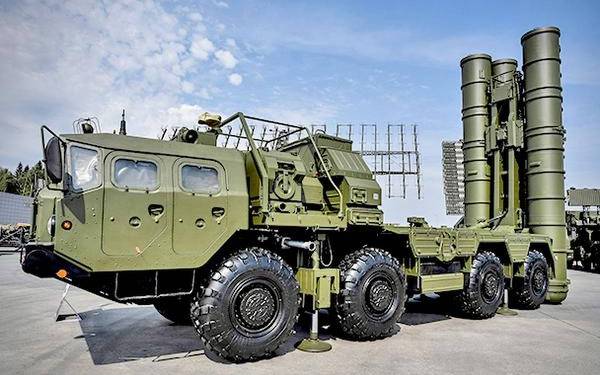S-400 Upgrades: IAF and DRDO Transform Russian Air Defence into an Impenetrable ‘Network of Networks’
In the wake of Pakistan Air Force’s (PAF) failed Suppression of Enemy Air Defenses (SEAD) mission during Operation Sindoor in May 2025, the Indian Air Force (IAF) and Defence Research and Development Organisation (DRDO) are fast-tracking upgrades to the S-400 Triumf system, evolving it from a standalone powerhouse into a resilient “network of networks.” This ₹5,000 crore enhancement, drawing from indigenous radars and the Integrated Air Command and Control System (IACCS), enables missile launches from remote command centers even if primary radars are jammed or targeted—rendering future PAF attempts futile. As border threats persist, these upgrades underscore India’s push for self-reliant, layered air defence amid global scrutiny.
Lessons from Operation Sindoor: Exposing Vulnerabilities
Operation Sindoor, triggered by the Pahalgam terror attack, saw PAF JF-17 Block-2 fighters armed with Chinese CM-400AKG supersonic missiles attempt to neutralize the S-400 battery at Adampur airbase on May 9, 2025. However, the IAF’s multi-layered countermeasures, including Akashteer and electronic warfare from Rafales, intercepted the threats mid-flight, downing two JF-17s without S-400 losses. Satellite imagery confirmed PAF’s retreat after minimal impact, validating the system’s 400 km detection range but highlighting risks in isolated radar dependency.
Post-operation reviews, led by Air Chief Marshal A.P. Singh, identified electronic jamming and SEAD as key threats, especially from China’s PLAAF J-20s along the LAC. The upgrades, approved by the Cabinet Committee on Security in August 2025, integrate DRDO’s Arudhra and Ashwini radars with S-400’s 91N6E Big Bird radar, creating a distributed architecture. This “network-centric” model, inspired by US Patriot upgrades, disperses command authority across IACCS nodes, ensuring 99% uptime even under saturation attacks.
Technical Overhaul: From Standalone to Synergistic Shield
The core upgrade fuses S-400’s four regiments (deployed at Adampur, Jodhpur, Ozhukand and Tezpur) with indigenous assets: Arudhra’s 350 km 3D tracking for low-level threats, Ashwini’s coastal surveillance, and Uttam AESA for fighter integration. AI algorithms from DRDO’s Centre for Artificial Intelligence and Robotics (CAIR) predict jamming patterns, auto-switching to optical backups like the new LODN network.
Key enhancements include:
- Remote Firing Capability: Missiles (40N6E at 400 km, 48N6 at 250 km) launchable from 100+ km away via IACCS, bypassing on-site radar compromise.
- EW Resilience: Upgraded Spectrum Management System counters Chinese YJ-12A missiles; integration with Rafale’s SPECTRA for active cancellation.
- Indigenous Boost: 60% local content via Bharat Electronics Limited (BEL), including software-defined radios for seamless data sharing.
| Component | Pre-Upgrade Capability | Post-Upgrade Enhancement |
|---|---|---|
| Detection Range | 400 km (primary radar) | 450 km fused (Arudhra + S-400) |
| Response Time | 10-15 sec to lock-on | <5 sec via AI prediction |
| Missile Batteries | 8 per regiment | 12, with remote cueing |
| Jamming Resistance | Medium (Russian EW) | High (CAIR AI + LODN optical) |
| Indigenous Integration | 30% (radars only) | 60% (BEL subsystems + IACCS) |
| Deployment Sites | 4 regiments | +2 (Ladakh, Sir Creek) by 2026 |
These specs position the upgraded S-400 as a “force multiplier,” capable of engaging 36 targets simultaneously—outpacing Pakistan’s HQ-9 (200 km) and rivaling China’s HQ-19.
Strategic Ramifications: Deterring Aggressors
The upgrades arrive amid heightened LoC/LAC risks: Pakistan’s underground airbase pivot post-Sindoor and China’s 200+ J-20 deployments. Defence Minister Rajnath Singh, in his October 2 address at Bhuj, warned of “history-changing” responses to Sir Creek misadventures, linking S-400 enhancements to broader deterrence. Globally, it counters US tariff pauses on Indian arms deals (e.g., Strykers), tilting towards Russia for S-500 pitches while prioritizing Atmanirbhar Bharat.
Economically, the project creates 10,000 jobs in Hyderabad and Pune, with BEL exporting upgraded modules to Armenia by 2026. It also synergizes with recent acquisitions like the India-UK Martlet missiles for low-level defence.
Future Horizons: Towards Indigenous Supremacy
By 2027, full IACCS-S-400 fusion will enable hypersonic intercepts, paving the way for Project Kusha (indigenous long-range SAM). As IAF chief A.P. Singh noted on Air Force Day, “S-400 isn’t just a system—it’s India’s unbreachable sky.” In an era of hybrid threats, these upgrades ensure aerial sovereignty remains ironclad.
Explore More:
Zorawar Light Tank for High-Altitude Warfare – Ground-air defence synergies.
India-UK £350M Missile Deal – Complementing layered protection.
Post-Op Sindoor: Pakistan’s Underground Airbases – The conflict that sparked change.
DRDO’s LODN Stealth Detection – Optical backups for S-400.
Sources: IDRW, Indian Defence News, and MoD updates as of October 11, 2025.
DefenceNiti.com: Empowering India’s Defence Awareness | #S400Upgrades #AtmanirbharBharat #IAF




Pingback: India’s Indigenous 350 km SAM - DefenceNiti.com